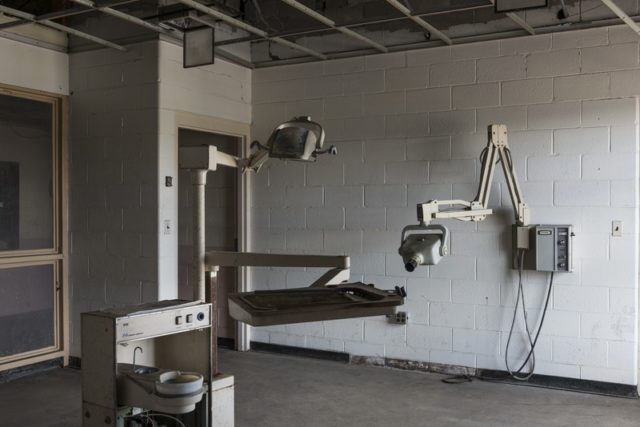Designed in a Gothic style and located in Moundsville, West Virginia, this prison served its time well until the day when it was retired from use in 1995. The design itself bears a striking resemblance with the 1858 state prison in Joliet, Illinois.
Both of the structures are almost completely identical complete with turrets and battlements. The only difference is the West Virginia State Penitentiary is half the size.

During 1863, West Virginia withdraws from Virginia at the height of the American Civil War. As a result, this new state had a shortage of various public institutions, among which a prison. And so the state built a temporary wooden prison to help satisfy the momentarily needs of the state and also allowed prison officials time to consider the right design to be used.
The first building to be built was the North Wagon Gate. It was constructed with hand-cut sandstone that was quarried from a local site. As was the case with many other prison constructions, the state of West Virginia used prison labor during the construction.

This was the first phase of the construction that continued until 1876. Once it was done, the total costs were around the $360,000 range. After the North Wagon Gate, next to follow were the north and south cell block areas.

The South Hall had 224 cells, and the North Hall had the kitchen, dining area, hospital, and chapel. In between the two, there was a 4-story tower that connected the South and North Halls and served as the administration building.
Inside this building, there was a space for the female prisoners as well as the personal living quarters for the warden and his family. The prison then opened its gates to receive 250 inmates before the next phase of building began on prison workshops and other secondary facilities.

During the 1900s some of the industries that could have been found inside this prison included a carpentry shop, a paint shop, a workshop, a stone yard, a brickyard, a blacksmith, a tailor, a bakery, and a hospital. At a later date, there were even a school and a library added to the arsenal of buildings the prison had.

When all was put together, the prison was virtually self-sufficient. There was also a prison farm and a coal mine that helped with the electricity, reducing the electricity bill by as much as $14,000 a year.
According to the Warden’s report “both the quantity and the quality of all the purchases of material, food, and clothing have been very gradually, but steadily, improved, while the discipline has become more nearly perfect and the exaction of labor less stringent.”
But as time went on the conditions at the prison started to worsen so much so that this facility was ranked by the United States Department of Justice’s Top Ten Most Violent Correctional Facilities list. From 1899 to 1959, ninety-four men were executed at the prison.
The inmates’ recreation room which they called “The Sugar Shack” was renowned as a place where gambling, fighting, and raping was done. With time the prison started to get overcrowded, often a cell 5 feet by 7 feet was shared between three prisoners. When the decision to expand the facility came in 1929, construction was once more accomplished using prison labor.

But none the less, it continued to be more than challenging to keep the prisoners in order. There was a total of thirty-six homicides that took place in the prison. Toward the end, it became well known for riots and escapes. In one prison break on November 7th, 1979, fifteen inmates escaped. A few years later in January of 1986, what was considered to be the most infamous riot in recent history took place.
The fate of the West Virginia State Penitentiary was sealed in a 1986 ruling by the West Virginia Supreme Court to close down the facility. It is now run as a tourist attraction that offers prison tours and events for ghost hunters.
